Key points
- A novel analysis of data recorded by gamekeepers revealed the impact of fox control practised in relatively small areas (average 8 km2) on fox density within each area.
- Data from 22 shooting estates were analysed separately, allowing comparison across a range of local circumstances.
- Fox density on all estates was suppressed compared to that expected without fox control (the ‘carrying capacity’).
- Replacement of culled foxes by immigration was rapid in some circumstances (max. 2 foxes/week). To keep numbers low, this had to be counteracted by intensive and sustained control effort.
- Maintaining low fox density through spring and early summer to protect vulnerable nesting gamebirds and other wildlife was clearly challenging and success was variable between estates. Fox density increased through this period on most estates, though it always remained below carrying capacity (range 27-78% of capacity).
Background
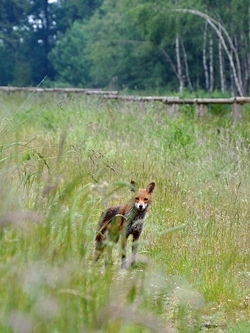 The fox is a pervasive and significant predator of ground-nesting birds (gamebirds, wading birds, ducks, terns, etc) and hares. To reduce predation losses on these prey species, foxes are culled intensively within relatively small management areas such as shooting estates or wildlife reserves.
The fox is a pervasive and significant predator of ground-nesting birds (gamebirds, wading birds, ducks, terns, etc) and hares. To reduce predation losses on these prey species, foxes are culled intensively within relatively small management areas such as shooting estates or wildlife reserves.
The value of lethal control methods for foxes has been questioned both theoretically and in some scientific studies because culled animals are always replaced. This led to the assertion that any reduction in numbers must be short-lived and futile.
So, when does ‘fox culling’ really equate to ‘control of fox density’? Experimental studies, such as Salisbury Plain1 and Otterburn2, previously showed that culling a suite of common predator species can be beneficial for wild ground-nesting birds and hares. But those results cannot be broken down: they don’t tell us the impact of culling on each predator species. Nor do they indicate how culling performs across a wider range of real-world circumstances, where background regional fox population, operator skills and resources, and habitat may all vary.
What they did
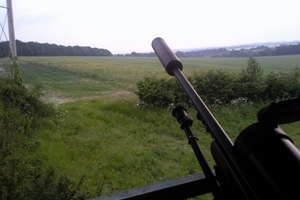 The GWCT already had detailed daily records of fox culling activity spanning up to five years in the 1990s, from more than 70 gamekeepers on shooting estates across Britain. In this study, a complex computer model was developed to reconstruct changes in the numbers of foxes on each shooting estate as culling progressed. This required specialist analytical skills (Bayesian state-space population modelling) and led to Tom Porteus gaining his PhD.
The GWCT already had detailed daily records of fox culling activity spanning up to five years in the 1990s, from more than 70 gamekeepers on shooting estates across Britain. In this study, a complex computer model was developed to reconstruct changes in the numbers of foxes on each shooting estate as culling progressed. This required specialist analytical skills (Bayesian state-space population modelling) and led to Tom Porteus gaining his PhD.
All contributing gamekeepers used night shooting with spotlamp and rifle (‘lamping’) as their preferred culling method and recorded both foxes seen and foxes killed, but culling effort and local circumstances varied substantially. To tease apart the population processes – births, deaths, and dispersal into or out of the estate – that lead to changes in fox density, the model needed data from at least three consecutive years. Data from 22 estates met this requirement.
Adjusting the model until it matched the sighting and culling records for each estate showed how large or small each population process must have been. Even with intensive research, most of these could not have been measured in the field while culling was ongoing. The number of foxes alive within the estate was estimated fortnight by fortnight, so the changes in numbers over time can be clearly illustrated. The effect of culling on fox numbers was assessed by comparing to the maximum number expected without culling (the ‘carrying capacity’), which was also inferred from the data.
What they found
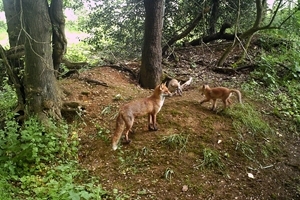 The effectiveness of fox control was considered from the perspective of wild ground-nesting birds, which are most vulnerable to predation by foxes when breeding in spring and early summer. (This may not have been the priority on those estates that relied on reared game.) A reduction in fox density through the spring/summer period was considered beneficial simply because it meant fewer hungry mouths to fill.
The effectiveness of fox control was considered from the perspective of wild ground-nesting birds, which are most vulnerable to predation by foxes when breeding in spring and early summer. (This may not have been the priority on those estates that relied on reared game.) A reduction in fox density through the spring/summer period was considered beneficial simply because it meant fewer hungry mouths to fill.
All 22 gamekeepers achieved a reduction in fox density by the start of this vulnerable period. Fox density in late winter was on average 47% of what it would have been without culling. On a few estates it was close to zero, but on each estate there was always at least one fox present in any given fortnight.
It was clearly challenging to maintain low fox density through spring and early summer, when shooting becomes less efficient because of vegetation cover. In most cases, fox density increased from late winter levels, although it remained well below carrying capacity. Nonetheless, even modest suppression of numbers can have substantial implications for fox food requirements. One set of data came from the Allerton Project, where a strong positive impact of predator control through the spring/summer period on wild gamebird and hare numbers had already been demonstrated3.
The estimates of immigration rate were revelatory, as there was no previous knowledge. On some estates, immigration clearly limited attempts to control fox numbers, despite prodigious effort. The extreme case – an estate in southern England – experienced an influx of more than two foxes per week throughout the year, and as a result intensive culling achieved only minor suppression of fox density within the estate.
What does this mean?
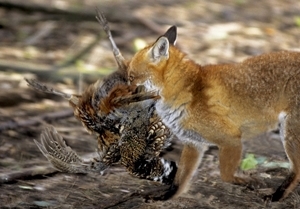 Until now, evidence had shown only what a predator control package addressing several predator species could achieve in high-profile experiments and demonstrations. This paper expands our understanding of the impact of fox culling in a range of circumstances, and what determines success or failure. While some of this may seem obvious to practitioners, the impact was not a forgone conclusion, and this study will be important to inform the public debate about lethal control of common predators.
Until now, evidence had shown only what a predator control package addressing several predator species could achieve in high-profile experiments and demonstrations. This paper expands our understanding of the impact of fox culling in a range of circumstances, and what determines success or failure. While some of this may seem obvious to practitioners, the impact was not a forgone conclusion, and this study will be important to inform the public debate about lethal control of common predators.
The study confirms that bag size (the number of foxes killed annually) is not a reliable indicator of effectiveness, as it can simply reflect rapid replacement of culled foxes. In some situations, the rate at which culled foxes were replaced posed a very significant challenge, which undoubtedly limited success. In all circumstances, considerable effort was required to achieve effective control of fox numbers during the spring and early summer, when prey species are most vulnerable.
The conclusions and analytical methods presented in this paper will be relevant to control of many problem wildlife species.
What happens next?
The same computer model and data can now be used to answer ‘What if…’ questions. Suppose the same gamekeepers had shifted their effort seasonally, or had used alternative methods to a greater extent? Suppose there had been two gamekeepers instead of one? What if they were using more efficient modern tools, like night vision and thermal imaging; or alternatively if visibility was limited by the kind of crops grown?
In the longer term, if resources allow, the Predation research team would like to explore what determines fox immigration pressure. Where do incoming foxes come from, and what resources generate this apparently surplus fox production? How do foxes discover the game-rich shooting estates? To answer the question of why foxes are such a problem, it is necessary to consider both the food resources sustaining the fox density in ‘source’ areas, and resources at the receiving end.
Read the original paper
Porteus TA, Reynolds JC, McAllister MK (2019) Population dynamics of foxes during restricted-area culling in Britain: Advancing understanding through state-space modelling of culling records. PLoS ONE 14(11): e0225201.
Photo credit: Mike Short/GWCT
References
- Tapper SC, Potts GR, Brockless MH. The effect of an experimental reduction in predation pressure on the breeding success and population density of grey partridges Perdix perdix. J Appl Ecol. 1996;33:965–78.
- Fletcher K, Aebischer NJ, Baines D, Foster R, Hoodless AN. Changes in breeding success and abundance of ground-nesting moorland birds in relation to the experimental deployment of legal predator control. J Appl Ecol. 2010;47:263–72.
- Stoate C, Leake AR. Where the Birds Sing. The Allerton Project: 10 Years of Conservation on Farmland. Fordingbridge, UK: The Game Conservancy Trust with Allerton Research & Educational Trust; 2002.
General Licences for 2020
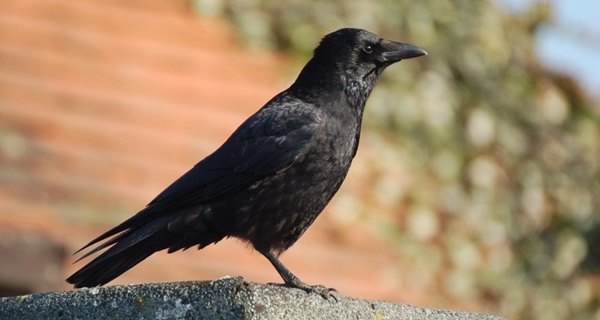
We're asking if you will help fund our challenging programme of work to ensure that those in charge listen not only to the science, but also the reality on the ground.
Please help us by donating by card or PayPal: